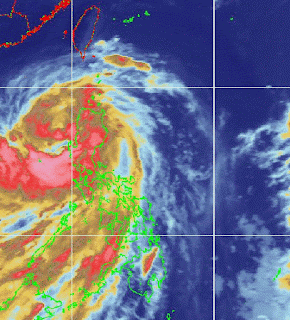 Most of us get our weather information from the evening TV
weather news. Another good portion of the population actually watches
and enjoys the Weather Channel.
Most of us get our weather information from the evening TV
weather news. Another good portion of the population actually watches
and enjoys the Weather Channel.Then there are those of us who would rather put it all together while making our own observations and forecasts using our own weather equipment and instruments. This portion of the population is known as "weather bugs, weather nuts, weather aficionados, weather hounds," and a variety of other names. The point is, these people enjoy and are sometimes obsessed by watching weather instruments and attempting to predict weather changes.
Like enthusiastic sports fans, these weather bugs can usually tell you just about everything there is to know about weather. They read about it, they watch it on TV and they go to all the online forums and weather chat lines. Many of them go to yearly or even monthly weather hound conventions. One thing is certain: every one of them will have his or her own weather station. Most of these will be wireless, digital home weather stations and they'll have sensors placed all over their own property and often throughout the entire neighborhood.
Though they don't have the high sophistication that NOAA and NASA enjoy, because these agencies are funded by the government, they do have preferences and specific models of weather instruments that they acquire as often as they can afford it. Some amateur weather forecasters have an array of tools and instruments that TV meteorologists would envy. It's all part of the fascination with weather and its various patterns and intricacies.
No self respecting weather buff would be caught dead without at least two of the following tools: anemometers, thermometers (indoor and outdoor), rain gauges, barometers, atomic clocks, weather maps of all kinds, including NASA and NOAA weather maps and even travel weather maps, hygrometers, psychrometers and any other weather instrument that they can get their hands on.
However, there are wireless weather stations available that are not nearly as expensive and have much the same instrumentation as the WLS-8000. One such item is the Honeywell TE653ELW Desktop Weather Forecaster. This station includes many popular components and the readout screen can be placed on a desktop or even hung on a wall and viewed very easily anytime the consumer desires. This product is more than just a Weather Forecaster. It's a Wireless Indoor Outdoor Thermometer and Hygrometer, a Barometer, and an Atomic Clock with Dual Alarms, Calendar, and Moon Phase. The price is $79 online. This is quite a difference. To some, this is enough. To others, it's just the beginning of a good home weather station.
There are also portable, hand-held weather stations that one can put in the care and carry along with them to any location. It is usually no larger than an indoor telephone and gives the user a plethora of weather information. The Kestrel 4000NV Weather Tracker is the next generation of weather monitoring. You can now measure EVERY major environmental condition, easily and accurately, right in the palm of your hand. Barometric Pressure, Altitude, Density Altitude, Temperature, Humidity, Wind Speed, Wind Chill, Dew Point, Wet Bulb, and Heat Index are all found in one pocket sized instrument. The cost? About $250.
These are exciting times for weather enthusiasts and the tools needed to forecast and observe the weather are very much available and at a cost that to most is easily affordable, to most folks. Nowadays, there's no reason not to have your own wireless weather station right in your own home. It may not be long until you're considered a "weather nut."


No comments:
Post a Comment